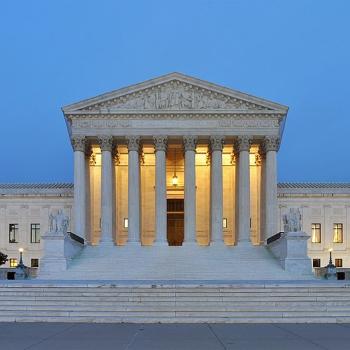President Trump and his coronavirus task force have issued a plan to transition back to normalcy. Here are the complete official guidelines, entitled Opening Up America Again.
The idea is to reduce restrictions, state by state, in three phases. Those would begin when states or regions within those states meet the following conditions: (1) A “downward trajectory” of cases for 14 days. (2) Hospitals not overloaded. (3) Rigorous testing in place for health-care workers.
If there is no rebound and if the three conditions are met for two additional weeks, states may progress through the remaining phases.
Meanwhile, states are responsible for setting up systems of testing, contact tracing, supply of equipment, establishing protections, and monitoring compliance. In addition, states will have the authority to decide when to implement the various phases and when to re-establish restrictions if necessary.
Here is a summary of the three phases, from Adriel Bettelheim, What’s In Trump’s Three-Phase Re-Opening Plan in Politico:
Phase one: Restaurants, movie theaters, sporting venues, places of worship and gyms can reopen if they observe strict social distancing. Elective surgeries can resume when appropriate on an outpatient basis.
Schools currently closed should remain shut and visits to senior living facilities and hospitals should be prohibited. Bars should remain closed. High-risk individuals should remain at home.
Phase two: Schools and organized youth activities like camps can reopen. Nonessential travel can resume, and people can start circulating in parks, outdoor recreational areas and shopping centers, while avoiding gatherings of more than 50 individuals unless unspecified precautionary measures are taken. Restaurants, movie theaters and other large venues can operate under moderate social distancing rules.
Vulnerable individuals should continue to shelter in place, and employers should continue to encourage telework whenever possible. Common areas where people congregate in close quarters should be closed. Bars can operate with diminished standing-room occupancy.
Phase three: Vulnerable individuals can resume public interactions but practice social distancing. Employers can resume unrestricted staffing of workplaces. Large public venues can operate under limited social distancing rules. Visits to senior care facilities and hospitals can resume.
Here are my thoughts about the plan. I want to hear yours as well:
*Letting the states decide when to pull the triggers makes sense, as opposed to one national one-size-fits-all decree. This is the genius of federalism. States have different rates of infection and different circumstances. And the United States of America is the third largest nation in the world by population, after China and India, so micro-managing from the central government is just not going to work.
*This will mean, however, that the country–and, more to the point, the economy–will open at different rates and in different places. New York, our financial capital, and California, a major food producer, will likely be shut down longer than most southern and interior states. The latter will be able to do business, but the states that won’t will be a drag on their operations, supplies, and markets.
*Also, this re-opening is going to be a long process. Once the phases start, it will take at least six weeks to go through them all to reach a semblance of normalcy. If a state can start in May, as 29 reportedly can, restrictions would still last until the middle of June.
*Places of worship can resume in Phase One, with “strict social distancing.” So can restaurants, but can they make enough money to survive if customers have to sit six feet away from each other? That would greatly diminish restaurant’s seating capacity as well as the socializing that attracts customers.
*Employers can’t resume normal staffing until Phase Three. But that’s what’s necessary to address unemployment and the other economic problems this epidemic has caused. So this means another full month or more of economic disaster.
*The document says that in Phase One, we should practice “strict” social distancing. In Phase Two, we should practice “moderate” social distancing. And in Phase Three, we should practice “limited” social distancing. But it doesn’t define what those protocols would entail. We need to know that.
*Those of us in “vulnerable populations”–like me!–will have to shelter in place until Phase Three! I’ll have been under house arrest for at least two months!
*This is all likely to get highly politicized, especially since this is an election year. The Democratic blue states, especially on the coasts, seem to be the hardest hit and will likely be shut down the longest. The Republican red states will mostly open sooner, both because the epidemic is not affecting them as much and because of their pro-business inclinations. Will this mean blue state voters, chafing against the restrictions being lifted everywhere else, will turn against their Democratic leaders? Or will red state voters, in the event that lessened restrictions will mean a spike in infections, turn against their Republican leaders for not taking the epidemic seriously enough? Or what?
*Surely lifting the restrictions will mean an uptick in the infection numbers. Even if that’s minor, the “downward trajectory” necessary for the phases would be ruined. For the epidemic to truly go away, we will need progress on the medical front. This will have to include widespread systematic testing. Can we really do that yet? And when we can, won’t more testing mean detecting more infections? Which would also ruin the “downward trajectory” numbers and put us back to where we started.
What are your thoughts about this plan? I really do want to hear your opinions in the comments. Do you have some better ideas?
Image by mohamed Hassan from Pixabay













